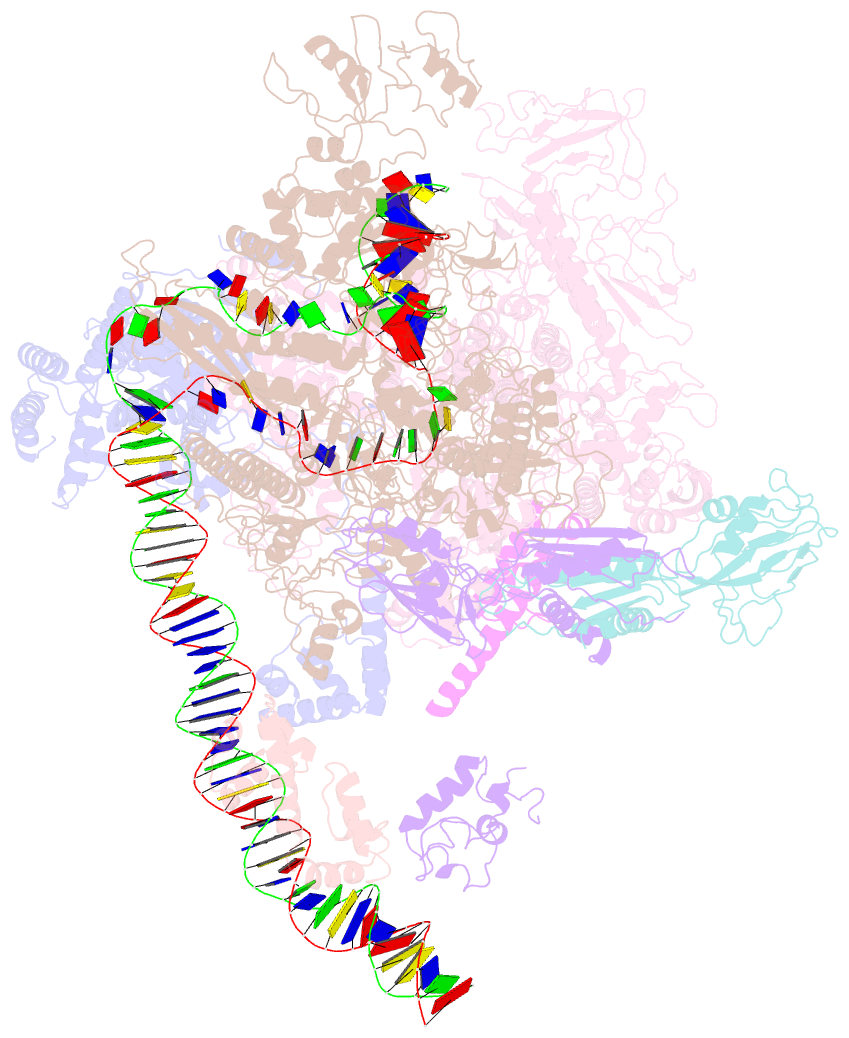Summary information and primary citation
- PDB-id
- 7bef; SNAP-derived features in text and JSON formats;
DNAproDB
- Class
- transcription
- Method
- cryo-EM (4.5 Å)
- Summary
- Structures of class ii bacterial transcription complexes
- Reference
- Hao M, Ye F, Jovanovic M, Kotta-Loizou I, Xu Q, Qin X, Buck M, Zhang X, Wang M (2022): "Structures of Class I and Class II Transcription Complexes Reveal the Molecular Basis of RamA-Dependent Transcription Activation." Adv Sci, 9, e2103669. doi: 10.1002/advs.202103669.
- Abstract
- Transcription activator RamA is linked to multidrug resistance of Klebsiella pneumoniae through controlling genes that encode efflux pumps (acrA) and porin-regulating antisense RNA (micF). In bacteria, σ70 , together with activators, controls the majority of genes by recruiting RNA polymerase (RNAP) to the promoter regions. RNAP and σ70 form a holoenzyme that recognizes -35 and -10 promoter DNA consensus sites. Many activators bind upstream from the holoenzyme and can be broadly divided into two classes. RamA acts as a class I activator on acrA and class II activator on micF, respectively. The authors present biochemical and structural data on RamA in complex with RNAP-σ70 at the two promoters and the data reveal the molecular basis for how RamA assembles and interacts with core RNAP and activates transcription that contributes to antibiotic resistance. Further, comparing with CAP/TAP complexes reveals common and activator-specific features in activator binding and uncovers distinct roles of the two C-terminal domains of RNAP α subunit.





